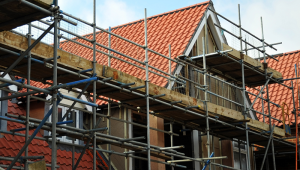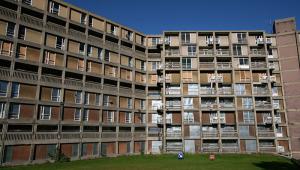The target, which the government wants to reach by the mid 2020s, is “highly ambitious”, a Public Accounts Committee report out today has pointed out.
But the government has no detailed plans on how it aims to achieve the goal, the committee said. “Inherent problems at the heart of the housing planning system are likely to jeopardise this target,” the PAC added.
The report Planning and the broken housing market said current levels of house building – with the average number of homes being built between 2005-2006 and 2017-18 at 177,000 – were “not promising”.
The Ministry of Housing, Communities and Local Government “simply does not have the mechanisms in place to achieve the 300,000 target” it stated.
“This is compounded by lack of detailed rationale as to why this target was chosen in the first place,” the report also said.
The government’s aims were also being hampered by local authorities failing to produce local plans, which will show how they expect to meet the need for new homes in their areas.
The MHCLG has said it wants development to be a ‘plan-led system’ – led by the local plans - but under-resourced and under-staffed councils are struggling to produce them.
Just 44% (149) of councils had an up-to-date plan in December 2018 and 46 (14%) had no plan at all.
Local plans are technically complex, time consuming and resource intensive and are therefore difficult to produce at a time when local authority resources are being squeezed. The Local Government Association predicts an £8bn funding gap for local authorities by 2025.
The government has made “limited use” of its powers to intervene in local authorities that fail to produce a plan, the PAC said. It added the ministry is “avoiding taking decisive action” by failing to take planning powers away from authorities.
The report also criticised the “poor” performance of the Planning Inspectorate, which it said had been been slow to determine housing appeals. The average time taken for housing appeals to be resolved grew from 30 weeks in 2013 to 38 weeks in 2018.
Meg Hillier, chair of the PAC, said: “Progress against the government’s annual new house building target is way off track and currently shows scant chance of being achieved.
“The government has set itself the highly ambitious target of building 300,000 homes a year by the mid 2020s – levels not seen since World War Two – even though there is no clear rationale for this figure and the ministry themselves say only 265,000 new homes a year are needed.”
Separate analysis from the Royal Town Planning Institute, released yesterday, found that 9,000 homes were built by local authorities in England in 2017-18, based on figures from 83 councils.
When extrapolated across the rest of England this data suggests council housebuilding is at its highest point since 1990.
Local Government Association housing spokesperson Martin Tett said: “The last time the country built more than 300,000 homes a year was 1977-78, when councils built 44% of them.
“Latest figures show councils were only able to build 2,000 homes last year – the highest level since 1992 – but need to be able to do so much more.”
The RTPI figures include homes produced through companies partly of wholly owned by councils.
Housing minister Kit Malthouse said: “We’re committed to building more, better and faster, including £44bn of funding and guarantees to support more homes, reforming the planning system to free up more land, and removing the cap on how much councils can borrow to build.”











